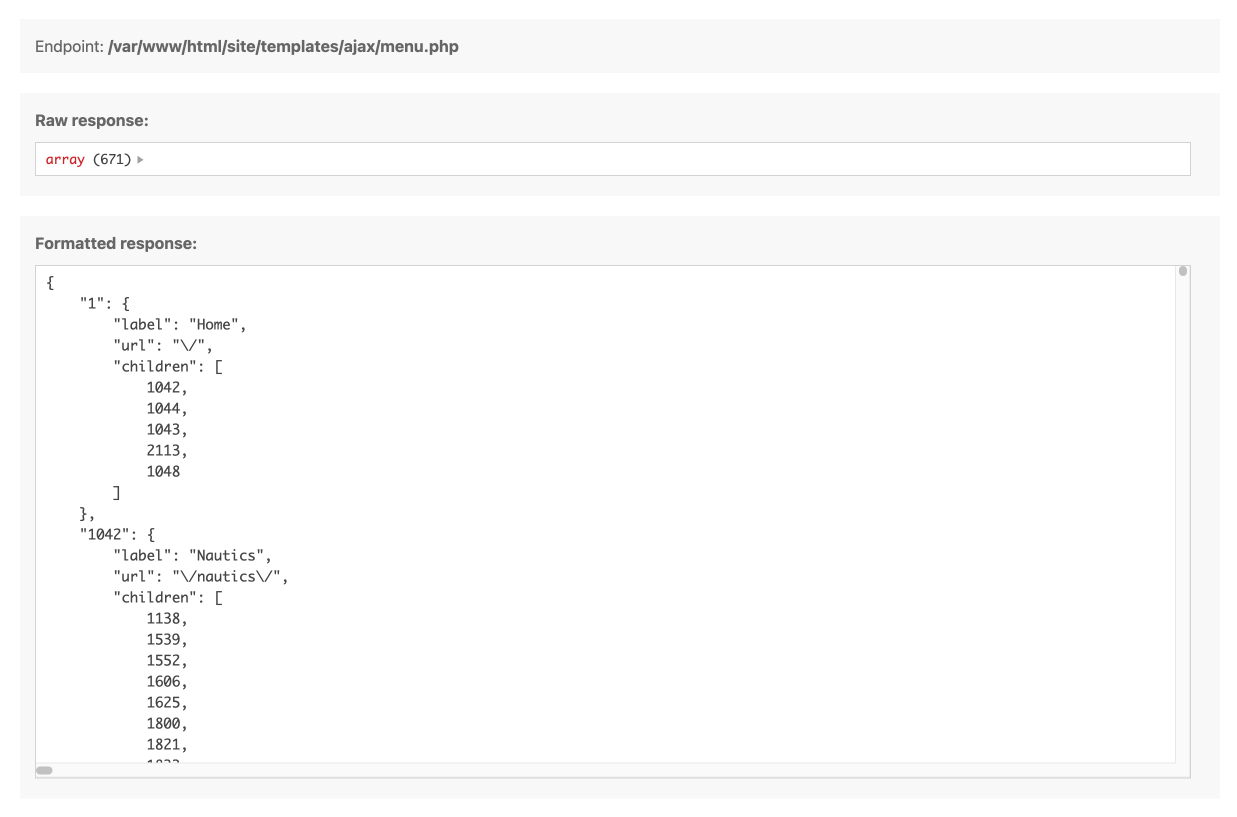AJAX Endpoints
As modern websites become more interactive, the need for AJAX endpoints has become increasingly important. RockFrontend makes it easy to create and use AJAX endpoints with HTMX, fetch() or any other AJAX technology.
To create a new endpoint, all you need to do is place a PHP file within the /site/templates/ajax/ directory. For example, adding a file named foo.php in this directory automatically generates an endpoint accessible via /ajax/foo.
Trailing Slashes
Note that RockFrontend ajax endpoints will never have a trailing slash. All requests to an url with a trailing slash will be redirected to the same url without a trailing slash and get parameters will be lost.
Nested Endpoints
You can also create nested endpoints by creating folders inside the ajax folder. Requests to /ajax/foo/bar will look for a file named foo/bar.php in the ajax folder and will be served from the url /ajax/foo/bar.
Example Endpoint
A minimal endpoint can look like this:
<?php
return ['foo', 'bar'];If your endpoint returns an array, RockFrontend automatically formats the response as JSON. This feature allows you to focus on your data logic without worrying about the response format.
User Input
All user input will be available to your endpoint via the $input variable. This variable will hold all variables that are sent with the request (GET, POST, Body Payload).
Note that the body payload has the highest precedence, followed by POST and then GET.
Take this example:
<script>
fetch('/ajax/foo?foo=xxx', {
method: 'POST',
body: "foo=BLA",
})
.then(response => response.json())
.then(data => console.log('Success:', data))
.catch((error) => console.error('Error:', error));
</script>$input->foo will be BLA in the endpoint, because foo=BLA has been sent as payload even though the endpoint ?foo=xxx has been requested!
You can also send payload as JSON:
<script>
fetch('/ajax/foo', {
method: 'POST',
body: JSON.stringify({ foo: 'BLA' }),
})
.then(response => response.json())
.then(data => console.log('Success:', data))
.catch((error) => console.error('Error:', error));
</script>Sanitizing Input
Always remember that $input holds the user's raw input, so you should always sanitize it before using it. For example:
<?php
$name = wire()->sanitizer->pageName($input->name);
return ['name' => $name];Access Control
Always make sure to check if the user is authorized to access the endpoint. For example:
<?php
if (!wire()->user->isSuperuser()) {
return ['error' => 'Unauthorized'];
}
return ['foo' => 'bar'];_init.php file
You can create a file /site/templates/ajax/_init.php and this file will be loaded before any ajax request!
This can be handy to either add global access control rules (eg allowing ajax only for logged in users for all endpoints) or to add custom variables:
<?php
namespace ProcessWire;
use RockFrontend\AJAX;
// access input variables (if needed)
$input = $this->ajaxVars();
// only allow ajax requests from logged in users
if (wire()->user->isGuest()) return AJAX::HTTP403_FORBIDDEN;
// to save variables for later use just add them to any PW object:
$wire->myTemporaryVariable = 'foo!';Debugging Endpoints (for Superusers)
When logged in as a superuser, RockFrontend provides a straightforward UI that shows all the important information for debugging your endpoints:
RockFrontend will automatically reload the page when the endpoint file is changed. If TracyDebugger is installed you can also use bd() in your endpoint to dump data.
Adding Endpoints to 3rd party modules
You can use the AJAX feature from other modules as well. An example is RockCommerce that serves ajax endpoints via RockFrontend. All you have to do is to add the AJAX folder to rockfrontend in the module's init() method:
rockfrontend()->addAjaxFolder('rockcommerce', __DIR__ . '/ajax');This will expose all files in the folder "ajax" under the url /rockcommerce/ so the file cart/add.php will be accessible via /rockcommerce/cart/add.


